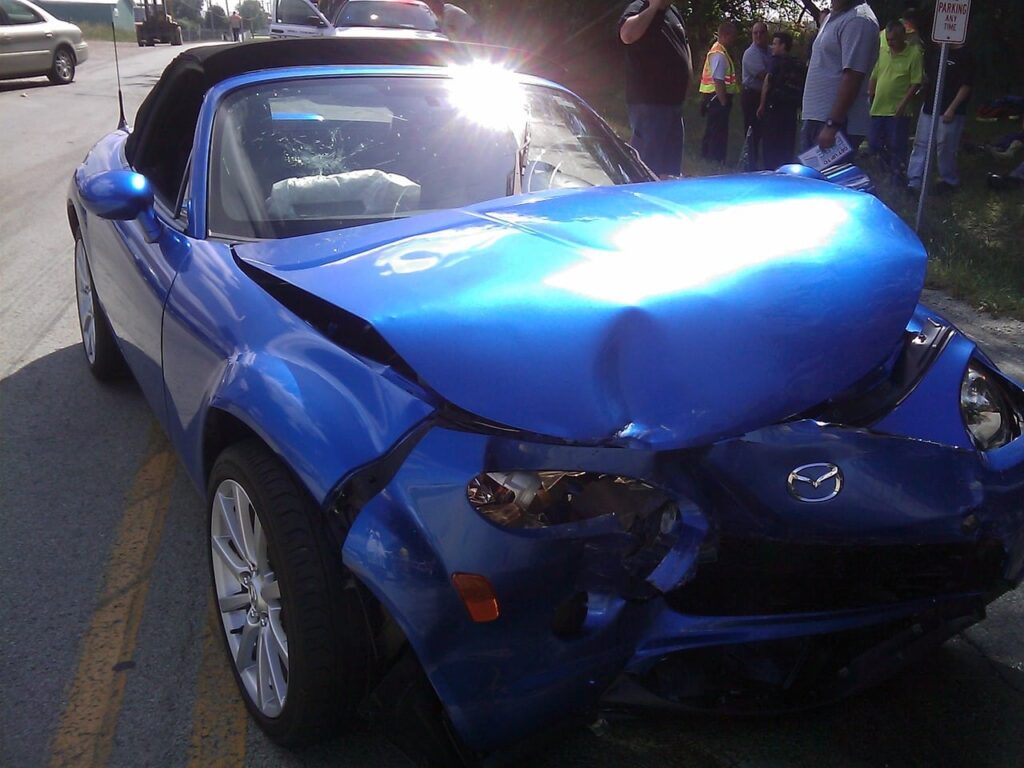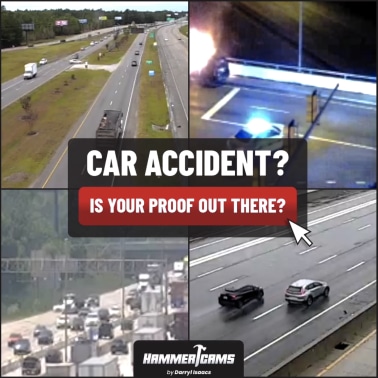Fault Determination
Last updated Wednesday, June 28th, 2023

Car accidents are complicated. Even if you know what happened, car accident fault can be hard to determine. And the other driver may often deny responsibility even when it was clearly their fault.
Who is at Fault in a Car Accident? – A Conversation With Darryl Isaacs
Attorney Darryl Isaacs sat down to address questions about car accidents and fault in a recent radio episode of “Ask The Hammer,” the podcast exploring the legal matters that matter most. Play the episode directly below.
How is car accident fault determined?
The scenario: You’re driving late at night, the road is empty, and as you approach an intersection the light is green. You glance over at your phone to see who texted you as you start through the intersection.
The next thing you know there’s a deafening bang, you feel a violent jolt and the airbag explodes in your face. You don’t know anything else until you wake up in the hospital. If you knew what hit you, you could say that somebody t-boned you after running a red light, therefore you were not at fault in the car accident.
But were you looking at the road when you crossed the intersection, or looking to see who texted you? If you were looking at something besides the road, then you can expect the other driver to place some of the blame on you making you at least partly at fault.
Depending on which state the accident occurred in, even if you are only partly at fault and the other party is mostly responsible for the accident, you can be barred from recovering any money for your injuries and other damages.
Some states deny you any compensation from the at-fault driver if you were in any way contributorily negligent or at fault in causing the collision and your injuries. Other states, such as Kentucky, allow you to make a claim against the driver who caused your harm even if you were partially or comparatively at fault. For these reasons, you should contact a car accident lawyer who can protect you from the insurance companies who wish to close their file and pay as little as possible.
We hear about serious crashes all the time. Like most situations involving human error, when it comes to car wrecks more than one driver is frequently wrong. To make matters more complicated, car accident laws vary from state to state, and so do the rules regarding auto insurance coverages and liability.
What Does No Fault State Mean?
In no fault accident states, everybody is at least partially covered for their own medical bills and lost wages no matter who was responsible for the car crash. But no fault accident laws vary, and even within an area with the same rules, each car accident is different, and liability can change accordingly.
Regardless of who is at fault in a car accident, chances are the at-fault driver’s insurance company will not want to pay victims the full amount they are entitled to under the law for their pain and suffering, wage loss, medicals now and in the future, and permanent impairment. Insurance companies are like any other business–they’re in it to make a profit.
If an insurance adjuster calls or comes to visit after the accident and tells you that the insurance company wants to settle your claim, do not accept a check from them or sign any document or release without first talking to a car accident lawyer, even if you live in one of the no fault auto insurance states. Do not discuss the accident or answer any questions from the insurance company for the driver who hurt you; tell the insurance adjuster to talk to your attorney. Do not give a recorded statement either.
If you do not have an auto accident law firm in your corner, Isaacs & Isaacs car accident law firm will help you now. Call the Hammer any time of the day or night for your free case evaluation at 800-333-9999.
Be sure to learn about possible case values with our car accident settlement calculator.











